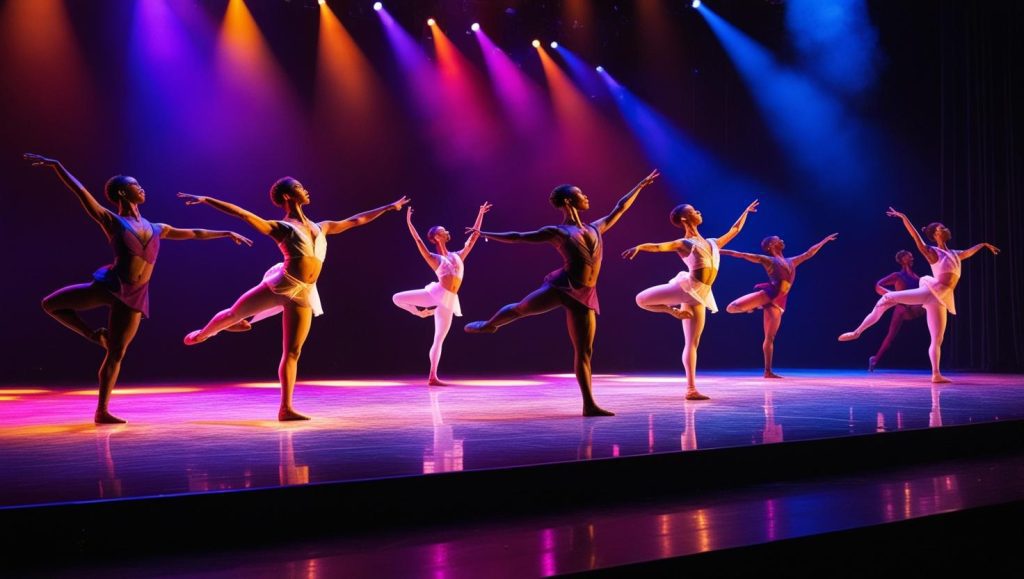Introduction
Stage movement and performance are essential aspects of theater arts, influencing how actors convey emotions, interact with the audience, and enhance storytelling. However, mastering stage presence, body language, and movement techniques can be challenging for students. This Stage Movement and Performance homework help guide aims to simplify these concepts by offering analysis, practical tips, and valuable external resources.

Understanding Stage Movement and Performance
Stage movement and performance encompass various elements that contribute to a compelling theatrical production. These include blocking, physical expression, voice projection, and spatial awareness.
1. Blocking
Blocking refers to the planned movement and positioning of actors on stage. It ensures that performances are visually appealing and that all actors remain visible to the audience.
- Key Tip: Always be aware of your position relative to other actors and stage elements.
- Resource: Theatrecrafts.com offers great insights into stage positioning.
2. Physical Expression
Actors rely on body language and gestures to convey emotions effectively. A strong physical presence enhances storytelling and audience engagement.
- Key Tip: Use exaggerated gestures for large theaters but subtle movements for intimate performances.
- Resource: National Theatre’s Acting Tips provides expert guidance on body language.
3. Voice Projection and Articulation
Clear speech and proper voice control help actors deliver lines effectively, ensuring their words reach the audience without strain.
- Key Tip: Practice deep breathing and vocal warm-ups before performances.
- Resource: Voice and Speech Training from the Royal Shakespeare Company provides excellent exercises.
4. Spatial Awareness
Understanding the stage layout and using space effectively enhances movement and interaction between actors.
- Key Tip: Rehearse movement patterns multiple times to ensure smooth transitions.
- Resource: Stage Directions Guide explains common stage terms and their importance.
Common Challenges in Stage Movement and Performance
Many students struggle with:
- Stage Fright – Nervousness can impact confidence and delivery.
- Overacting or Underacting – Balancing expressiveness is crucial.
- Unclear Movement – Hesitation or stiffness can affect performance.
Strategies for Improving Stage Movement and Performance
- Practice Regularly – Repetition helps build muscle memory.
- Record and Review – Watching recordings highlights areas for improvement.
- Work with a Coach – Feedback from an acting instructor provides valuable insights.
- Engage in Improv Exercises – Enhances spontaneity and movement fluidity.
- Use Mirrors – Practicing in front of a mirror helps refine gestures and posture.
Analyzing Notable Stage Performances
1. Hamlet’s Soliloquy (“To be or not to be”)
- Performance Elements: Emotional depth, controlled movement, and precise articulation.
- Famous Quote: “To be, or not to be, that is the question.”
- Lesson: Movement should complement dialogue rather than distract from it.
2. The Balcony Scene from Romeo and Juliet
- Performance Elements: Expressive body language and timing.
- Famous Quote: “O Romeo, Romeo! Wherefore art thou Romeo?”
- Lesson: Eye contact and pacing enhance romantic tension.
3. Macbeth’s Dagger Speech
- Performance Elements: Suspense-building through movement.
- Famous Quote: “Is this a dagger which I see before me?”
- Lesson: Strategic pacing creates dramatic intensity.
How to Excel in Stage Movement and Performance Assignments
- Understand the Assignment Prompt – Identify key performance elements required.
- Incorporate Feedback – Use peer and instructor feedback to refine techniques.
- Focus on Physicality – Ensure gestures and posture align with the character.
- Experiment with Different Styles – Trying various approaches enhances versatility.
- Rehearse in Full Costume – Costumes can affect movement and performance.
Recommended External Resources for Stage Movement and Performance Homework Help
- National Theatre’s Performance Guides – Offers expert tutorials.
- Theatrecrafts.com – Covers various aspects of stagecraft.
- BBC Bitesize Drama – Provides student-friendly explanations.
- MIT OpenCourseWare – Theatre Arts – Offers free educational resources on acting and stage movement.
Conclusion
Mastering stage movement and performance requires practice, awareness, and a deep understanding of theatrical techniques. By applying structured methods, utilizing expert resources, and refining movement skills, students can develop strong stage presence and improve their acting capabilities. This Stage Movement and Performance homework help guide provides essential tools for excelling in theater studies.


